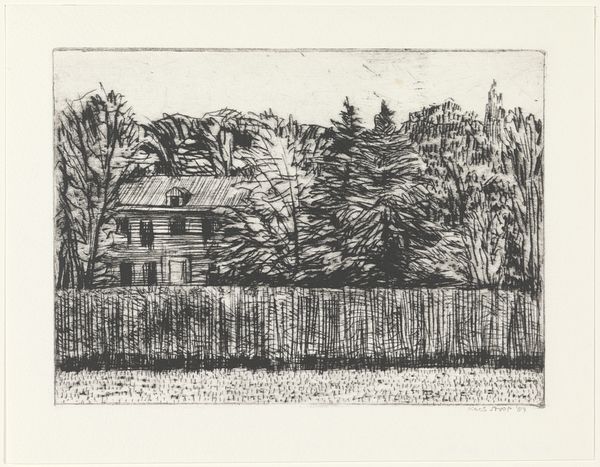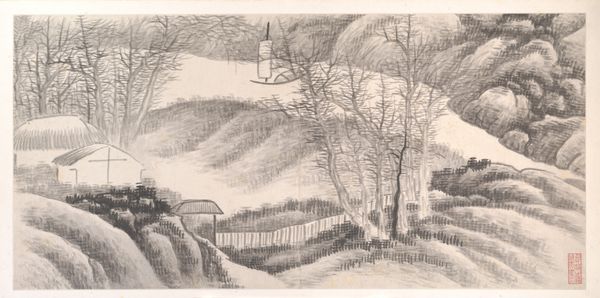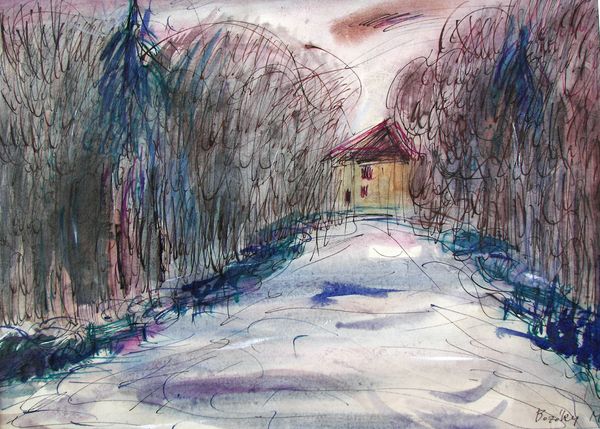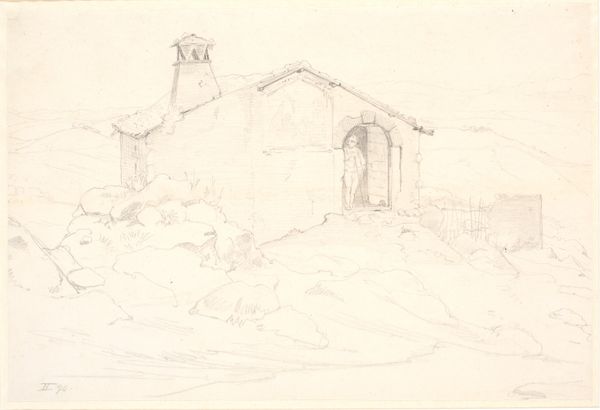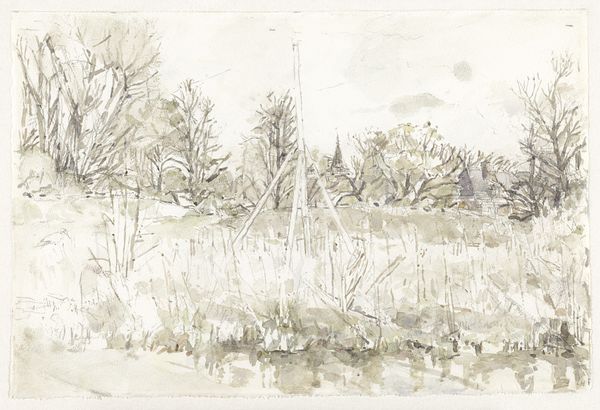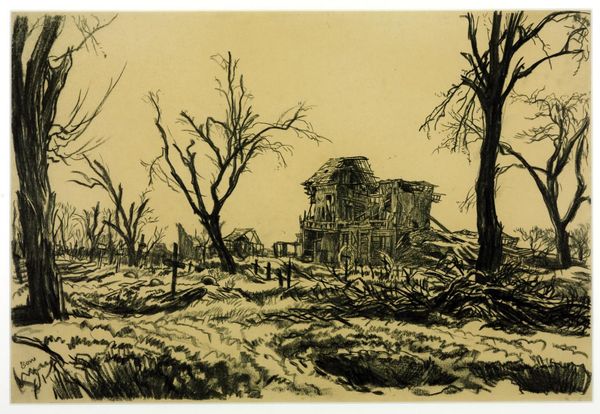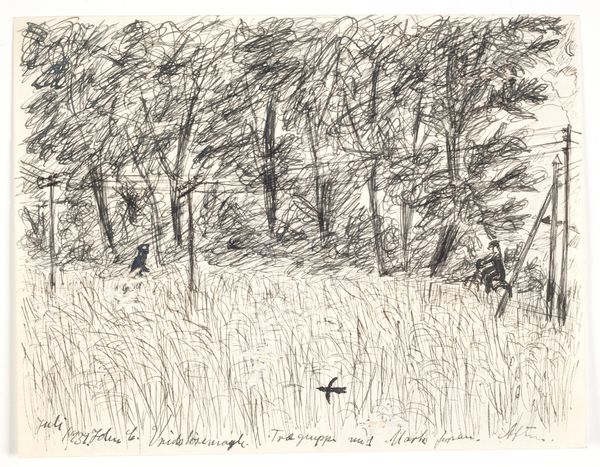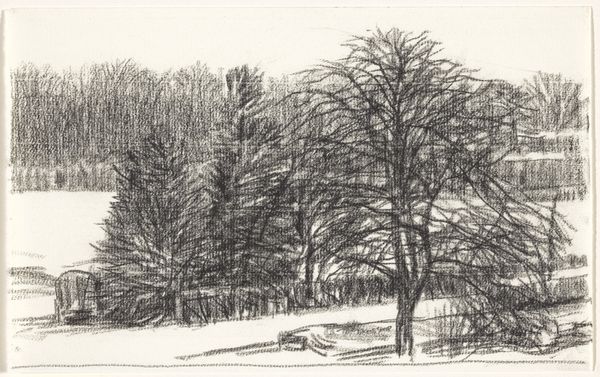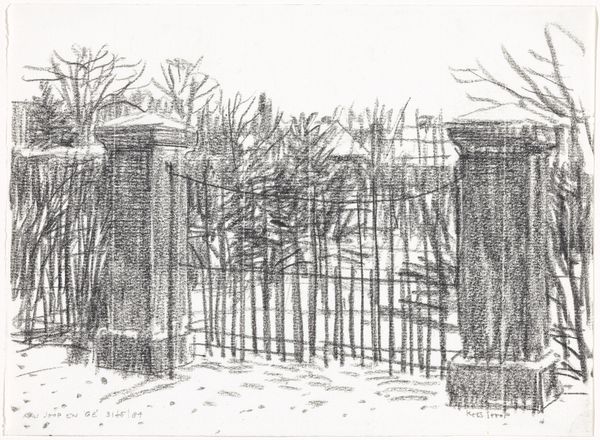
drawing, pencil
#
landscape illustration sketch
#
drawing
#
landscape
#
pencil
#
cityscape
#
watercolour illustration
#
realism
Dimensions: 36 x 50 cm
Copyright: Creative Commons NonCommercial
Editor: So, here we have Alfred Krupa's "The Edison Cinema in Karlovac," made in 1989, using pencil and drawing techniques. It's a rather striking image; there's something haunting about the way the building is framed by those stark trees. What historical layers do you see at play here? Curator: The Edison Cinema, even in this rendering, speaks to the public function of art and architecture within a specific socio-political context. It’s not simply a building; it’s a cultural hub. Given the date, 1989, what do you know about the socio-political climate in Yugoslavia and its impact on cultural institutions like this cinema? Editor: 1989 was right before Yugoslavia really started to break apart, so tensions would have been rising, and there’d be a feeling of uncertainty around cultural identity and expression, right? Curator: Exactly. And that tension informs the way Krupa might represent it. Note the bare trees, almost skeletal, and the somewhat obscured view. Does that say something about access to culture at that moment, or the perceived fragility of these public spaces? Is it about literal transparency or something deeper? Editor: It could suggest both, maybe a feeling of impending change and perhaps even a threat to the cinema’s existence or purpose. It’s interesting how the “realism” style clashes with the mood... Curator: Precisely! Realism, but tinged with unease. The artist has framed the building using raw linear textures: is this decision possibly communicating the raw reality of daily life or something else? How does the choice to depict a seemingly mundane scene speak to the broader political landscape? Editor: I hadn't considered the broader context, that the drawing could be more than just an aesthetic representation of a building but actually engaging with contemporary tensions. It provides insight into how institutions shape our view of art. Thanks for making this perspective visible! Curator: And thank you for opening your mind to these possibilities. Recognizing the intertwined nature of art and its historical context deepens our understanding, hopefully broadening conversations around this artwork for our audience.
Comments
No comments
Be the first to comment and join the conversation on the ultimate creative platform.



